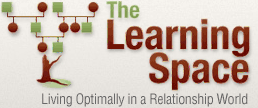Clinical Conference
Emotional Beliefs, Differentiation of Self, and Neurofeedback
October 05, 2007
Donna Troisi, LCSW-C
Emotional beliefs are automatic directives that, well, direct our behavior. During times of emotional intensity, they are more likely to become activated. Emotional beliefs come in varying forms. They are those automatic phrases we say or think as if that is the way the world is. “I’ve always been the problem.” “I can’t do anything right.” “I am a gift to the world.” “I can do anything.” Whatever the sound of these deep-seated perceptions, what they all have in common is that they are felt, believed, and acted upon AS IF they were factual and true. They are powerful both in how they compel our behavior and in their impact on self and other.
How do they come to live in each of us? What are their origins, why are they so powerful, and how to change them are questions that are addressed in Priscilla Friesen’s clinical conference Emotional Beliefs, Differentiation of Self, and Neurofeedback. The format of the clinical conference includes video-taped interviews, which illustrate and enrich one’s understanding of the topic being presented.
The underpinnings of her ideas are derived from Bowen Theory and from neuroscience—brain development and function. Friesen’s life work has been to observe, tease out, and clarify the interplay of central nervous system activation and emotional process as described by Bowen. Her ability to witness the cellular facts of an individual’s sensitivity (reactivity) to its environment and the people in it has been through the use of specialized instrumentation – EEG/Neurofeedback.
According to Friesen, emotional beliefs develop early in life and are the underpinnings of thought, feelings, and action. Bowen described this in the concept of the multigenerational emotional process. Simplistically, the process tunes a person to what the group, through the generations, deems a threat, important, etc. Parent’s emotional beliefs about themselves and the child will govern how the child perceives self and the world. The child forms his emotional beliefs in the relationship process with the nuclear and extended family, which begins in utero. The brain starts its development in the maternal environment, which is the womb, and is subject to all the stress hormones that the mother is. From birth on, that brain development continues in relationship to its environment, which first and foremost is the family relationship system. The degree of flexibility in any member's response to the group process will make it more or less easier to think about and act on well-thought-out principles rather than automatic emotional beliefs and reactions. In other words, differentiating self.
In 1976, Bowen wrote,
It is reasonably accurate to compare the functioning of the emotional and intellectual systems to the structure and function of the brain … Anatomically, it would be more accurate to think of the two as being connected by nerve tracts…the more the separateness between the centers, the more the intellectual center is able to block, or screen out, a spectrum of stimuli from the emotional center. The emotional center controls the autonomic nervous system…and handles the myriads of sensory stimuli from its…organ systems within the body as well as stimuli from all the sensing organs that perceive the environment and relationships with others. (p. 372)
Emotional reactivity as well as other brain states (e.g., focus and attention) can be observed in brainwave activity. The patterns of activity reflect the degree of flexibility in any brain to produce the brainwave activity that is necessary to attend to the task at hand. For example, sleep requires that our brain produce slow waves whereas attention requires that our brain produce faster waves. We all know what happens when we turn out the light and our mind just can’t seem to get off the ‘hamster wheel.’ Neurofeedback uses the EEG, which measures the electrical activity of the brain, to observe the patterns of brainwave activity, and feeds that information back to the individual through visual and auditory responses. The technology allows us to witness the nervous system’s organization and its reactivity to its environment.
The goal of both neurofeedback and putting efforts into differentiating self is to interrupt the automatic nature of the patterns in favor of more flexible and self-governed responses. One can do this by becoming more aware of the nature of the reactivity and how it compels behavior. The increased awareness can lead to more effective choices. Information has an impact.

